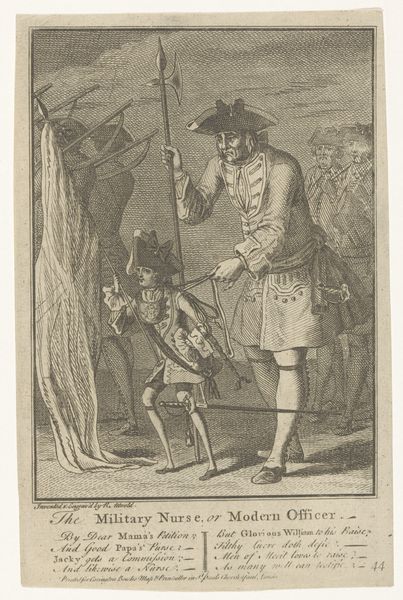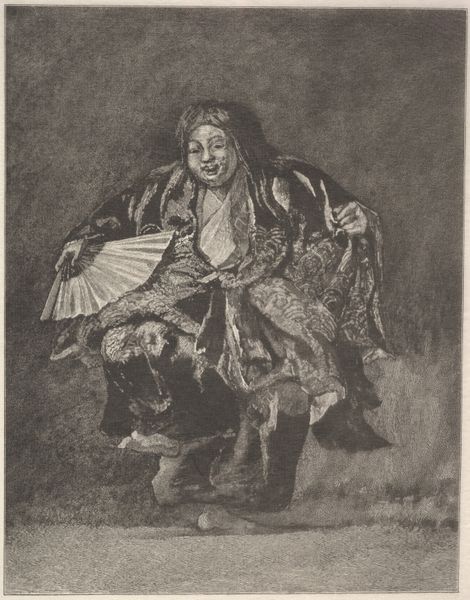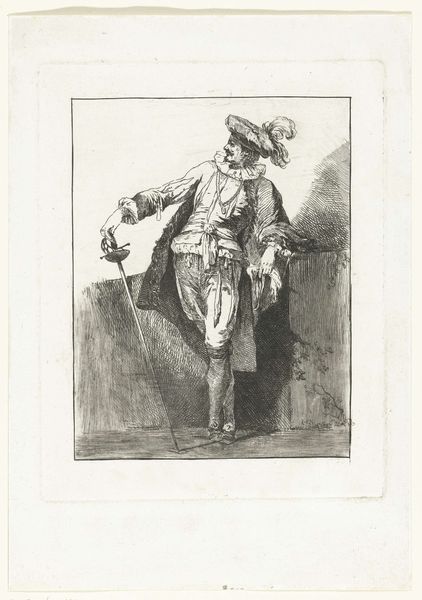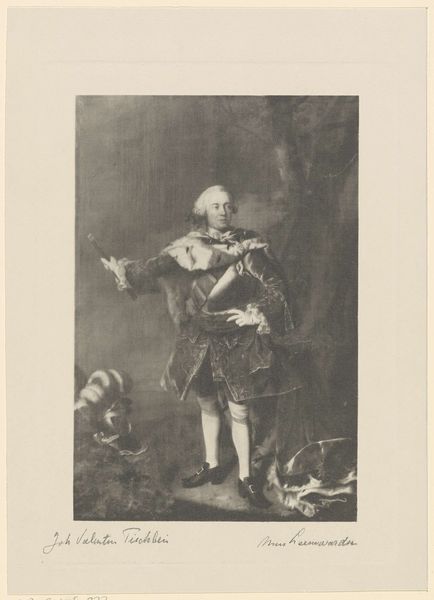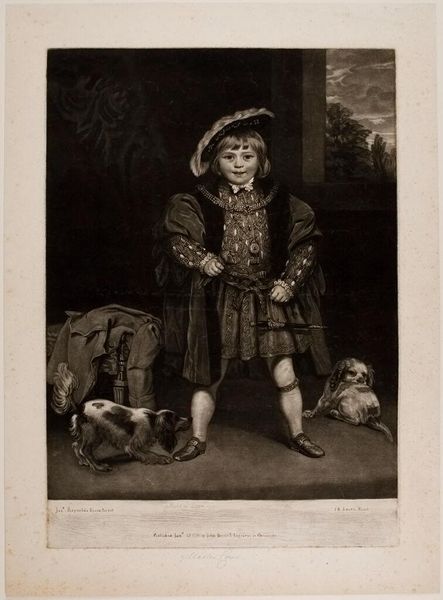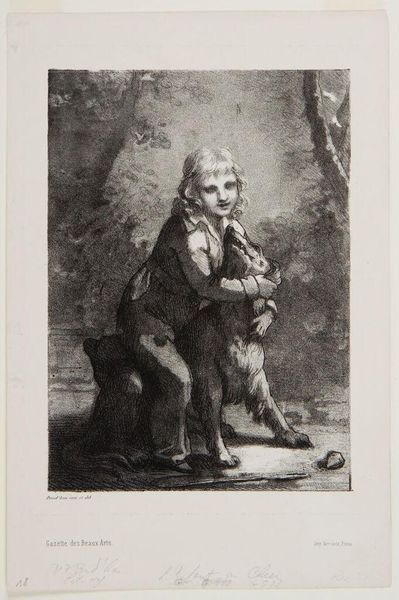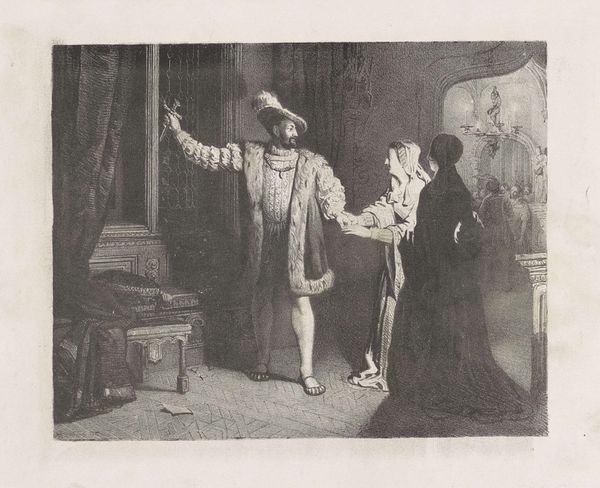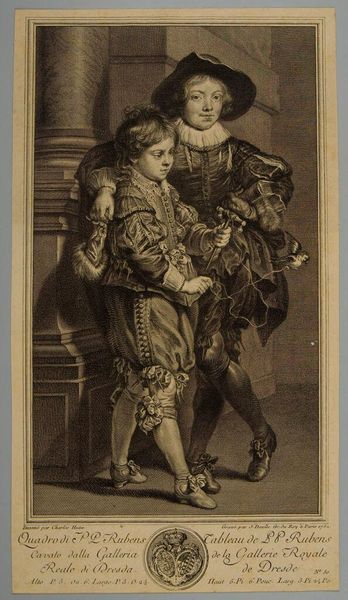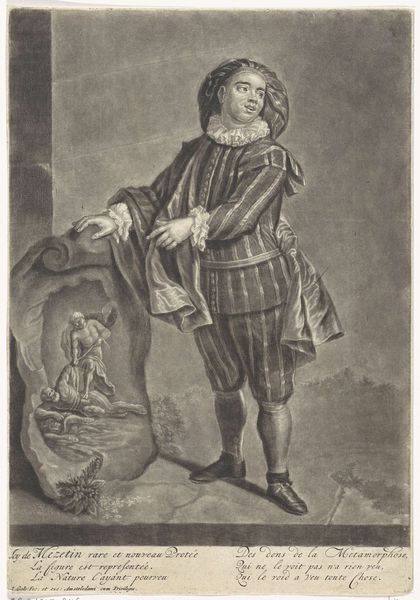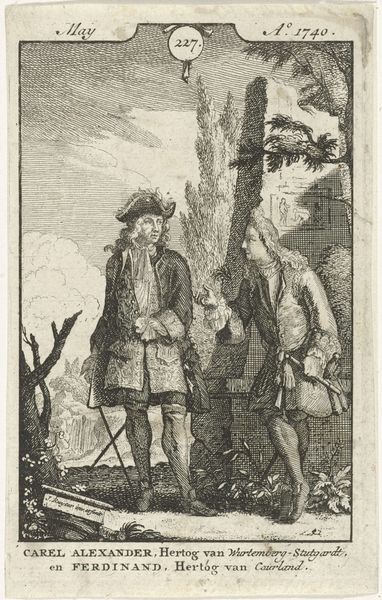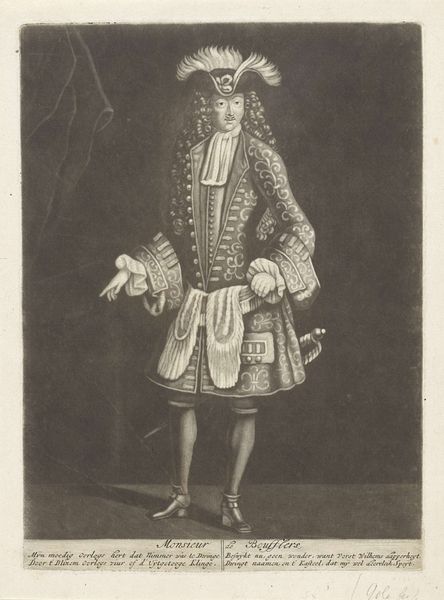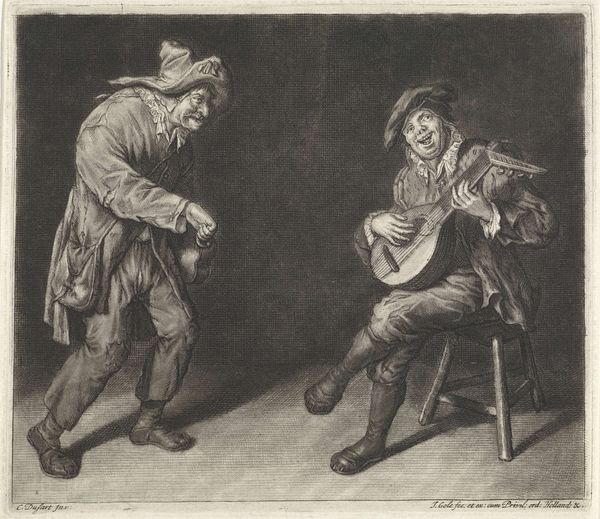
intaglio, engraving
#
portrait
#
baroque
#
intaglio
#
old engraving style
#
charcoal drawing
#
figuration
#
pencil drawing
#
engraving
Dimensions: height 249 mm, width 186 mm
Copyright: Rijks Museum: Open Domain
Curator: Good afternoon, and welcome. We are standing before a fascinating portrait here at the Rijksmuseum. Jacob Gole created this engraving between 1688 and 1696; it’s titled "Portret van Hans Worrenbergh." What's grabbing you about it? Editor: Well, it's certainly different. My first thought is...unease. The exaggerated contrast and unusual composition makes the atmosphere rather unsettling. Like a bizarre play in progress. The lighting throws odd shadows, and it just feels...off-kilter. Curator: Interesting you say that. Historically, these types of portraits of individuals with dwarfism often appeared within a framework of social commentary. Dwarfism was often seen as something to be observed, something displayed. So, it calls attention to the ways marginalized bodies were viewed within early modern European society. The darker shadings, and the unusual size relationship… do you feel that amplifies that kind of display? Editor: It certainly heightens the visual tension. The smaller figure of Hans, pushed toward the side and made so small against what reads almost like stage scenery is hard to shake off. Are we supposed to feel some sort of… superiority looking at him? Because I feel more sadness. The full figure in contrast, a larger figure who seems to be Jaen, adds to that odd theatrical contrast, further isolating Hans within this constructed space. Curator: It really underlines how deeply ingrained this cultural perspective was. By the Baroque period, such engravings served both as documentation and as commentary – often reinforcing prevailing attitudes toward the human form and social standing. They were also, I'm sure, commodified in their distribution in print. Editor: Making this intimate moment extremely public... there's almost a violation present. It’s as though Jacob Gole captured them not merely as individuals, but also as cultural curiosities. Curator: And the distribution via print enabled those ideas about identity to spread. How were individuals seen, viewed, consumed by early modern European culture. The work can give pause for considering modern day sensitivities towards the differently abled, also. Editor: Yes, you’re left wrestling with your own modern sensibility looking back. Jacob Gole provokes, disturbs, questions – intentionally or otherwise. Ultimately, the image remains fixed within a very complex historical frame.
Comments
No comments
Be the first to comment and join the conversation on the ultimate creative platform.
